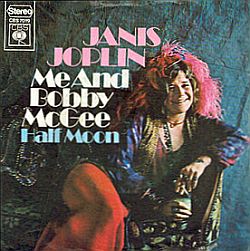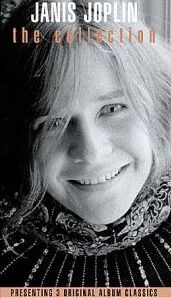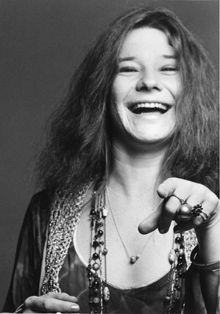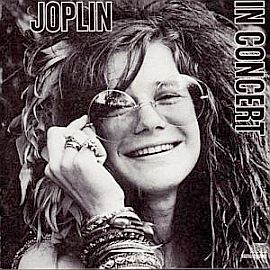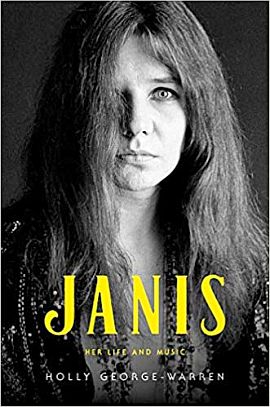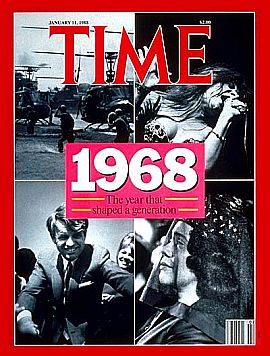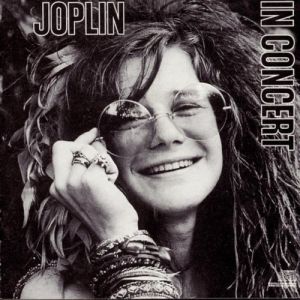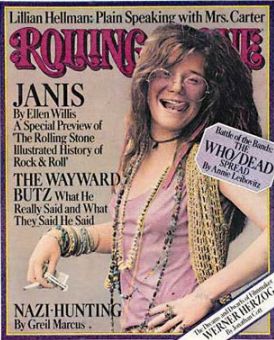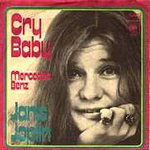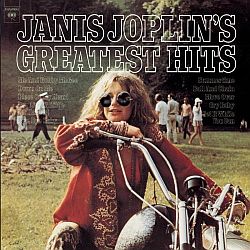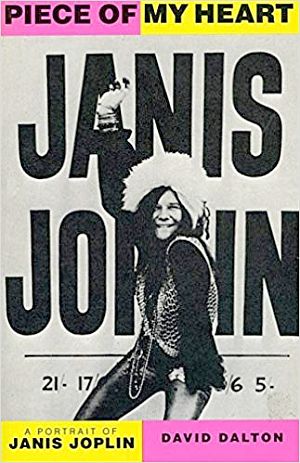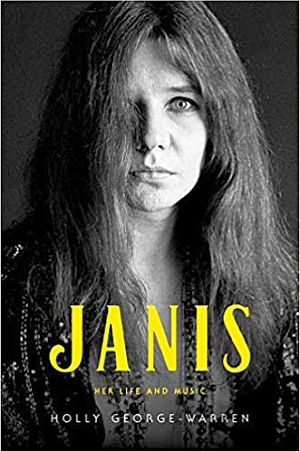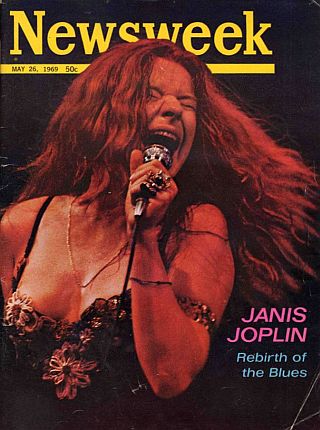
Janis Joplin featured in a ‘Newsweek’ cover story, ‘Rebirth of the Blues,’ May 26, 1969.
Joplin sang her own brand of the blues in an incendiary style. Yet in her short time — between 1966 and 1970 — she carved out a piece of music history that was distinctly her own.
During these years, she traveled from the conservative community of Port Arthur, Texas to the expansive and unpredictable world that was the drug/hippie/music scene of 1960s San Francisco — and mostly in the glare of national stardom.
Joplin was born in Port Arthur, an oil refinery town, in 1943. As a teenager in the late 1950s, she had read about Jack Kerouac and the Beatniks, began to dress in her own style, and started listening to blues music with a few high school friends. Black blues singers Bessie Smith and Leadbelly were among her heroes.
An outcast in Port Arthur by the early 1960s, Joplin had made her way to California a time or two, and eventually came to San Francisco’s music and hippie scene. At the June 1967 Monterey Pop Festival she captured national attention with a stunning blues performance of “Ball and Chain.” From that point on, she became something of national phenomenon. But not everyone loved Janis Joplin. Her stage antics and whiskey-swilling, devil-may-care style put many people off. Some were convinced she had a death wish and was killing herself slowly with each performance and each day’s excesses, so that when she sang “Piece of My Heart,” the meaning was for real.
The article that follows here covers some of the main events in the last four years of her life, from her rapid rise to stardom to her untimely death.

Janis Joplin performing at the Monterey Pop Festival in June 1967 where she would do a stunning version of ‘Ball and Chain’ that would mark her as an overnight blues sensation. Photo, Ted Streshinsky. Click for studio DVD version.
Music Player
“Piece of My Heart”-’68
Rock Epiphany
Janis Joplin did not initially see herself as a big-time performer or a major talent. But in 1966, when she first teamed up with a real rock band she had met through friends, Joplin had a kind of epiphany.
Chet Helms, a fellow Texan and one of San Francisco’s music promoters, introduced her to a then little-known band called Big Brother and the Holding Company. Up to that point, Joplin was thinking she had a good enough voice for local gigs, but that was about it.
“… All of a sudden someone threw me into this rock band,” she would later explain, recalling her Big Brother session. “They threw these musicians at me, man, and the sound was coming from behind, the bass was charging me, and I decided then and there that was it, I never wanted to do anything else. It was better than it had been with any man, you know… Maybe that’s the trouble…”
Joplin joined Big Brother in June 1966. Her first public performance with them was at the Avalon Ballroom in San Francisco where they became the house band. In the following year, they cut their first album, Big Brother and The Holding Company, and gained a following with songs from that album, including, “Bye Bye Baby,” “Blind Man” and “Down On Me.” Then on June 17, 1967 she an Big Brother performed their show-stopping set on the second day of the Monterey International Pop Festival, setting them on a path to national stardom.
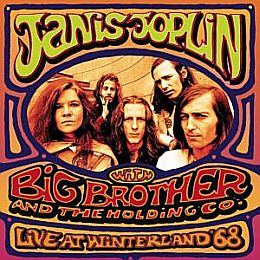
Janis Joplin with members of Big Brother and the Holding Co., on album performance at Winterland in San Francisco. Click for CD or digital.
In February 1968, they began an East Coast tour in Philadelphia, and also played Anderson Hall in in New York where Joplin revealed her raw power over an audience. On the last day of their East Coast swing, April 7, 1968, Joplin and Big Brother performed at the “Wake For Martin Luther King Jr.” concert in New York along with Jimi Hendrix, Buddy Guy, Joni Mitchell, Richie Havens, Paul Butterfield and Elvin Bishop. The next month or so was spent recording the album Cheap Thrills, which would be released later that summer.
In July 1968 she hit the Newport Jazz Festival in Rhode Island. In August, Cheap Thirlls was released and debuted at No. 1 on the Billboard album charts. It sold one million copies in the first month featuring songs such as “Piece Of My Heart,” among others. Joplin and Big Brother appeared on the West coast TV show, Hollywood Palace on October 26, 1968, performing two songs: “Summertime” and “I Need a Man to Love.”
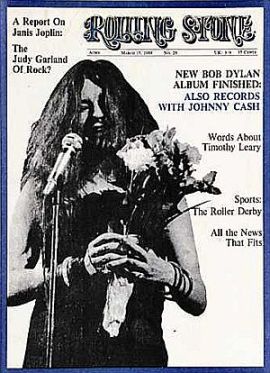
Janis Joplin on the cover of the March 15th, 1969 edition of Rolling Stone, featuring a story that asks if she is “the Judy Garland of Rock?” Click for copy.
In March 1969 there was a TV appearance on CBS’s 60 Minutes with Mike Wallace and a Rolling Stone cover story that month posing the question: “Janis: The Judy Garland of Rock?” Also in March, Joplin and her band appeared on The Ed Sullivan Show. Then it was back to San Francisco to Winterland and The Fillmore West.
A European tour came in April-May 1969 — Frankfurt, Stockholm, Amsterdam, Copenhagen, and Paris. Her debut in London at Albert Hall that April produced rave reviews in the papers and trade press — Disc, Melody Maker, and The Telegraph. Back in the States, studio work for another album, Kozmic Blues, began in Hollywood in June. Joplin also appeared on The Dick Cavett Show for the first time July 18,1969. She would appear on Cavett’s show two more times in 1970. She and her band also played various music festivals that summer–Devonshire Downs in Northridge, CA, and the Atlanta Pop Festival in Georgia in July. At the Atlantic City, New Jersey Pop Festival in early August, she sang with Little Richard.
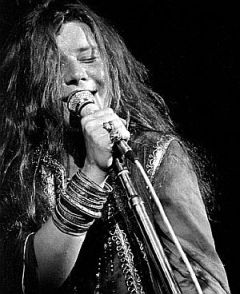
Janis Joplin performing at Woodstock, 1969.
Music Player
“Try (Just a Little Bit Harder)”
Joplin by then had parted ways with Big Brother & the Holding Company. Still, she had a full compliment of musicians backing her at Woodstock, where she performed in the wee hours, Saturday-to-Sunday, at about 2:00 a.m. Some reported that without her normal band, Joplin’s performance lacked its usual punch, but others found it a solid performance.
Henry Diltz was an official photographer at Woodstock and had an “all-access pass” that got him to the stage, and more importantly, “a little catwalk built just under the lip of the stage” where he took photographs of Joplin performing. “I was literally feet in front of her while she was singing — the absolutely best seat in the entire house of 400,000 people.” Diltz said of Joplin’s performance: “Everything I saw her sing, it was nothing held back.”
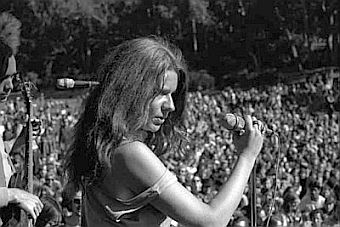
A younger Janis Joplin performing at an unidentified rock-festival venue sometime in the 1960s.
Following Woodstock, and through the remainder of 1969, there were other outings for Joplin and her band.
In September they played the New Orleans Pop Festival at Baton Rouge International Speedway in Louisiana and at the Hollywood Bowl in L.A.
In October there were gigs in Austin and Houston, Texas. In November she appeared at Curtis Hall concert in Tampa, Florida where she was charged with two counts of using vulgar and obscene language on stage. Later that month she appeared at Auditorium Hall in Chicago, and also Madison Square Garden in New York where she sang with Tina Turner at a Rolling Stones concert.
Her first solo effort, I Got Dem Ol’ Kozmic Blues Again Mama!, with the Kozmic Blues Band, had been released in September 1969, and received mixed reviews. It included songs such as “Try (Just a Little Bit Harder)” and “To Love Somebody,” a cover of a Bee Gees’ tune.
At the end of November 1969 Joplin played the West Palm Beach Rock Festival. In December there was an appearance in Nashville and another at Madison Square Garden — called a “rousing display of blues and rock” by the New York Times — where she was joined on stage by Johnny Winter and Paul Butterfield. It was about this time that she was “romantically linked” with Joe Namath in the New York papers, which appears to have been exaggerated beyond a meeting and a date or two. Other appearances in 1969 included ABC-TV’s Tom Jones Show, the Quaker City Rock Festival/Philadelphia, the Civic Center/Baltimore, ABC-TV’s show Music Scene, and the Toronto Pop Festival. Back home in California, meanwhile, Joplin moved into to a secluded home in a Redwood forest in the Larkspur area of Marin County, California, north of San Francisco, a beautiful spot between Mount Tamalpais and the San Francisco Bay. But toward the end of 1969, Joplin decided to take some time off.
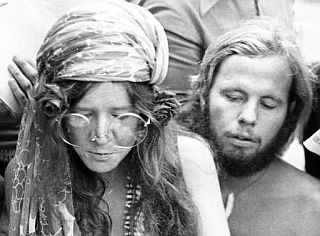
Janis Joplin & David Niehaus on Copacabana Beach in Brazil, 1970, where Janis was surrounded by, and talking with, reporters.
R&R in Brazil
In January of 1970, Janis and her Kozmic Blues band parted ways, and in February, she traveled to Brazil with her friend and costume designer Linda Gravenites. Gravenites had been with Joplin since 1966 and had lived a clean and sober life and was traveling with Joplin in part to help her kick her drug and alcohol habits.
In Brazil, Joplin met and became involved with David Niehaus, a clean and sober American schoolteacher who was traveling around the world at the time. The two were later photographed as happy revelers at Carnival in Rio de Janeiro, described as a “carefree” couple having a great time. Niehaus was one of the first men in Janis’s life at the time who saw her as a woman and not a rock star, and Janis was quite taken with him. By April she reported from Rio that she was “going off into the jungle with a big bear of a man.” But when Joplin returned to the U.S. she began using heroin again and her relationship with Niehaus ended as a result. Still, some friends would say that Niehuas was the lost love of her life.

Poster for a Janis Joplin concert on June 12, 1970 in Louisville, KY with her new Full-Tilt Boogie Band.
On April 4th in San Francisco, she performed a reunion gig with Big Brother & The Holding Co. at the Fillmore West. Again, on April 12th, she appeared with Big Brother at Winterland where she and group were found in excellent form. By the time she began touring with Full Tilt Boogie in May 1970, Joplin had told friends she was drug-free. In fact, the young Canadians in her new band were also drug free and had no association with her old San Francisco crowd. Still, some noticed that her drinking had increased.
In late June 1970, she appeared on TV’s The Dick Cavett Show, where she announced she would attend her ten-year high school class reunion later that summer in Port Arthur, Texas. High school had not been a happy time for Joplin, noting at one point that her classmates, “laughed me out of class, out of town and out of the state.” More on the high school visit later.
 1970 poster advertising Canada’s transconti- nental Festival Express. |
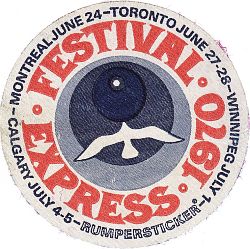 Festival Express logo sticker. |
The Festival Express
In late June and early July 1970, Joplin and her new band joined the all-star Festival Express tour through Canada. On this tour, Joplin and her band performed on the same bill with other acts including: the Grateful Dead, Delaney and Bonnie, Rick Danko and The Band, Eric Andersen, Ian and Sylvia, and others.
The Festival Express was unique among rock festivals. Rather than flying to each city — Toronto, Winnipeg, Calgary and Vancouver were each scheduled — the musicians would travel by chartered Canadian National Railways train. The idea was to foster an atmosphere of musical creativity and closeness between the performers. The trips between cities were a mix of jam sessions and partying, with no shortage of drugs and alcohol. One of these sessions became quite notable — with Rick Danko of The Band, Jerry Garcia and Bob Weir of the Grateful Dead, and Janis Joplin all having a rollicking good time.
During the actual Festival Express series of concerts — which saw the Vancouver concert cancelled due to the mayor’s “anti-hippie” edicts — Janis Joplin gave some memorable performances. Footage of Joplin singing “Tell Mama” in Calgary would later become an MTV video in the 1980s. This performance would also be included on later Joplin albums and DVDs.
The Festival Express Tour ended in early July 1970, but some 30 years later, in 2003, a “rockumentary” was produced featuring the original Festival Express tour, its music, and travels. That film would reap more than $1.2 million at the U.S. box office, and the DVD would become a hot seller as well. Shortly after the Festival Express, Joplin and the Full Tilt Boogie Band traveled to Honolulu, Hawaii where they performed in early July 1970 at the International Center Arena. But then it was back to California.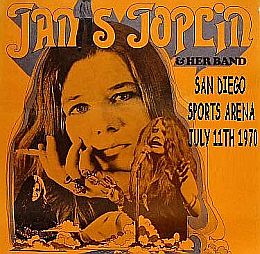
Poster for July 1970 Janis Joplin concert.
San Diego
On July 11th, Joplin and the Full Tilt Boogie Band arrived in San Diego for a concert there at the Sports Arena. They were joined in San Diego by longtime Doors producer, Paul Rothchild, who was being considered to work with Joplin on her next album. Janis’s sister, Laura, would later write of Rothchild in her book, Love, Janis:
“In San Diego, Janis gave him a stopwatch, saying ‘Look, I’ve got thirty-five good minutes in me. You stand behind the amps and I’ll look you over, you flash me how much time I have left.’ Paul thought it was a good sign that she was pacing herself like a runner.”
Joplin was fighting her alcohol and drug demons at the time.

Psychedelic-style poster for the July 11, 1970 concert in San Diego with Janis Joplin photo.
“. . . I was enraptured because I was listening to one of the most brilliant vocalists I ever heard, in classical, pop, or jazz music. What a voice. . . all of the woman was revealed. The vessel of Janis vanished. For somebody like me, who was always talking about the inner beauty and all that stuff, it got me big. So I was totally hooked from that moment on, on every single possible level.”
Several weeks later, Rothchild would help Janis work on her final album, Pearl.
On the plane ride back to San Francisco after the San Diego concert, Janis was upbeat, as the presence of old friends at the concert had energized her. She bought drinks for everyone on the plane.
But some of those with her, like Big Brother guitarist James Gurley, thought she was a bit “too exuberant, trying to be the life of the party.”
Joplin was still on an emotional roller coaster; high and then low. She was struggling to maintain her equilibrium.
Shea Stadium
In early August 1970, Joplin again appeared on The Dick Cavett Show, and a few days later, on August 6, 1970, performed as a surprise guest at the Festival for Peace at Shea Stadium in Queens. Joplin was not on the original roster of performers for the concert, but since she was in New York and her former band, Big Brother, was on the bill, she agreed to do the concert. By some accounts, at least 50,000 fans attended Joplin’s performance, re- portedly aided by a bottle of Southern Comfort. This concert — also called the Summer Festival for Peace — followed a Winter Festival for Peace that had been staged earlier that year at Madison Square Garden. These concerts were among the first ever in the U.S. to be used for political fund raising and anti-war purposes. Such concerts were not generally seen prior to 1970, but became more common thereafter. The acts at the Peace Festivals generally donated their time and performances. Among the performers at Shea Stadium that August were Peter Yarrow, Pacific Gas & Electric, Tom Paxton, Dionne Warwick, Poco, Ten Wheel Drive, Al Kooper, Richie Havens, Sha-Na-Na, The Young Rascals, Paul Simon, Creedence Clearwater Revival, Steppenwolf, The James Gang, Miles Davis, Johnny Winter, Herbie Hancock and others. The show ran from 10:00 a.m. to midnight. And by some accounts, at least 50,000 fans attended. Joplin’s performance — reportedly aided by a bottle of Southern Comfort whiskey — included at least four of her songs: “Ball & Chain,” “Summertime,” “Turtle Blues” and “Piece of My Heart.”
Bessie’s Marker
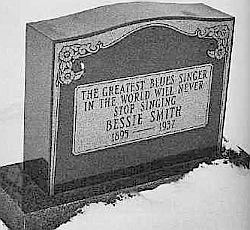
Headstone for Bessie Smith’s grave site that Janis Joplin helped pay for. Inscription:‘The greatest blues singer in the world will never stop singing.’
Joplin’s next scheduled appearance in 1970 was in Boston, at Harvard College, but her band’s equipment was stolen. The group managed to make their performance at Harvard Stadium on August 12 th before 40,000 fans using borrowed equipment. Still, they seemed to have delivered a decent concert, as a front-page story in Harvard Crimson newspaper gave the concert a positive review. It would be Joplin’s last public appearance with the Full Tilt Boogie Band and her last public performance. Her next stop was her former home town, Port Arthur, Texas for the tenth year reunion of her high school class.
|
Janis’ Texas Hurt  Joplin as she appeared in her 1960 high school photo. |
Final Days
During late August, Joplin arrived in Los Angeles to begin work on a new album. Sessions were planned for the Sunset Sound Studio with producer Paul Rothchild. Joplin checked into the nearby Landmark Motel. She had been seeing a steady new boyfriend, a younger and wealthy easterner named Seth Morgan, and they were rumored to be engaged. But Joplin at the time threw herself into her recording sessions and the work on her new album.When he entered her motel room, Cooke found Joplin dead on the floor. She also had a bit of fun at the session, at one point recording a birthday greeting for John Lennon that would be sent to him later — using the Roy Rogers / Dale Evens tune, “Happy Trails.”
On Saturday, October 3, 1970, Joplin visited the Sunset Studios to listen to the instrumental track for the song “Buried Alive in the Blues” prior to recording her vocal track with it, scheduled for the next day. But on Sunday afternoon, she failed to show up at the studio. Producer Rothchild and road manager John Cooke became concerned. Cooke drove to the Landmark Motel where he found Joplin’s psychedelically painted Porsche still in the parking lot. When he entered her motel room, Cooke found Joplin dead on the floor. The official cause of death was later determined as an overdose of heroin, possibly combined with the effects of alcohol. Janis Joplin was 27 years old. Her ashes were later scattered into the Pacific Ocean along Stinson Beach north of San Francisco.
Joplin’s newly recorded material from her Los Angeles studio sessions, meanwhile, had not gone to market. Four months after her death, in February 1971, the new material was released under the album name, Pearl, a nickname sometimes used for Joplin. The album included the songs “Mercedes Benz,” “Get It While You Can,” and “Me and Bobby McGee.” Pearl topped the album charts for nine weeks, and “Me and Bobby McGee” became a No. 1 single in 1971 and one of her biggest hits. But the one song on that album without Joplin’s lyrics — the performance she never showed up for the weekend of her death — was left as an instrumental, “Buried Alive in The Blues.” Part of the verse in that song goes as follows: “All caught up in a landslide / Bad luck pressing in from all sides / Just got knocked off my easy ride / Buried alive in the blues.” And as Joplin herself once said: “People, whether they know it or not, like their blues singer’s miserable. They like their blues singers to die afterwards.”
Joplin as Icon
Joplin’s death was a blow to her fans and the music world, especially since only weeks earlier, Jimi Hendrix had also died. Joplin was remembered as a musical force and an icon for her own times as well as the ages. Many thought Joplin was just hitting her stride with Pearl, and might have gone on to much greater things had she overcome her demons. Tom Moon, writing in his book, 1,000 Recordings to Hear Before You Die, calls Pearl, “the precious last testament of a belter.” By her last year, Moon says, Joplin had grown into “a devastatingly original voice, the rare white interpreter of African American music who resisted the ready cliche. She treated old Delta songs and ’50s R&B ballads as theatrical platforms, ripe for large-scale rethinking. Her blues woe was never typical blues woe. …[S]he could turn out a plea that made listeners feel like they were part of a fateful make-or-break moment happening right then.”
Jon Pareles of the New York Times wrote that Joplin was: “overpowering and deeply vulnerable, brassy and shy, stylized and direct, indomitable and masochistic. She took the tough rasp of old blues shouters and made it her own by bringing out pain and tension to match the bravado. With magnificent timing Joplin made it seem as if she was pouring out unvarnished emotion.”
The Rock ‘n Roll Hall of Fame, writing her 1995 induction description, adds: “Janis Joplin has passed into the realm of legend: an outwardly brash yet inwardly vulnerable and troubled personality who possessed one of the most passionate voices in rock history.”
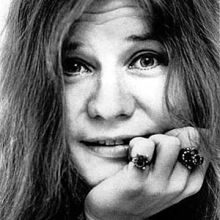
Janis Joplin, undated photo.
Music Player
“Me & Bobby McGee”
In fact, along with Grace Slick of The Jefferson Airplane, Joplin is credited with opening doors for women who would follow her in the rock ‘n roll business. And finally, music journalist Ellen Wills noted that “Joplin belonged to that select group of pop figures who mattered as much for themselves as for their music. Among American rock performers, she was second only to Bob Dylan in importance as a creator-recorder-embodiment of her generation’s mythology.” Joplin was inducted into the Rock and Roll Hall of Fame in 1995, and was given a Grammy Lifetime Achievement Award in 2005. Musicologists and historians continue to revisit her work. In November 2009, Case Western Reserve University and the Rock and Roll Hall of Fame and Museum celebrated the music of Janis Joplin during the 14th annual American Music Masters series, calling her one of rock ‘n roll’s most passionate and influential artists.
Back in Port Arthur, Texas, meanwhile, and nearly two decades after her death, some of the love and recognition Janis Joplin had sought from her hometown began coming her way in after-the-fact fashion. In 1988, Joplin’s life and achievements were showcased and recognized at a January Convention Center gathering — an event, wrote Peter Applebome of the New York Times, “that perhaps had as much to do with economics as with affection.” Some 5,000 people came out for the ceremony, a major turn out for Port Arthur. There was a dedication of a Janis Joplin Memorial, which included a multi-image bronze sculpture of Joplin. The sculpture, along with momentos of Joplin’s career, as well as that of other local musicians including the Big Bopper (Jiles Perry Richardson, Jr.) and Johnny Winter, would eventually become part of the Museum of the Gulf Coast, housing a permanent Joplin exhibit on the second floor.In January 2008, Port Arthur celebrated Joplin’s 65th birthday by putting a historical marker in front of her childhood home. The town now proclaims its link to Joplin with billboards, brochures, an annual concert, and local tours of various Joplin landmarks. “She was a very popular figure in the ’60s, and she had a lot to do with the style of music that evolved at that time,” said Yvonne Sutherlin of Jefferson County Historical Commission in January 2008. “We just want people to know that she’s from here.”
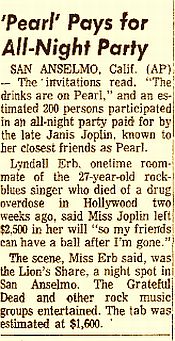
Associated Press, November 7th, 1970.
See also at this website: “Selling Janis Joplin, 1995,” about a Mercedes-Benz TV ad using a Joplin song, and “White Rabbit,” a profile of a Jefferson Airplane song, its politics, and the group’s lead singer, Grace Slick. Other stories on notable women can be found at the topics page, “Noteworthy Ladies.” Thanks for visiting – and if you like what you find here, please make a donation to help support the research and writing at this website. Thank you. — Jack Doyle
|
Please Support Thank You |
______________________________
Date Posted: 7 December 2009
Last Update: 29 July 2020
Comments to: jdoyle@pophistorydig.com
Article Citation:
Jack Doyle, “Joplin’s Shooting Star,”
PopHistoryDig.com, December 7, 2009.
______________________________
Sources, Links & Additional Information
 Janis Joplin, 1960s; Michael Ochs Archives. |
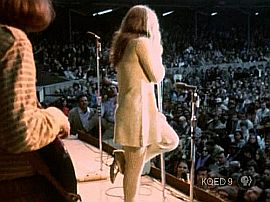 KQED/PBS photo of Janis Joplin performing at the Monterey Folk Festival 1967 with Big Brother & the Holding Co. |
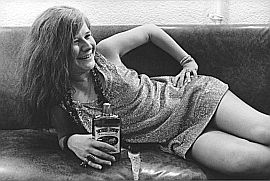 Janis Joplin & ‘Southern Comfort’ photo by Jim Marshall, shot backstage at San Francisco’s Winterland in 1968. “Janis was a great subject to photograph,” observed Marshall, “ because she was not afraid of the camera and came alive on stage... She was very real and still a little girl when she died, a very famous little girl.” |
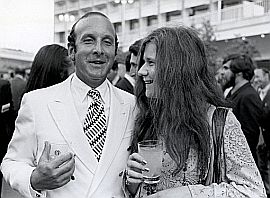 Janis Joplin with Columbia Records president Clive Davis at a 1968 party celebrating Joplin's record deal. Davis had seen Joplin perform at the Monterey Pop Festival with Big Brother, later telling ‘Rolling Stone’ magazine that her performance was “mezmerizing...” |
Robert Shelton, “Janis Joplin Is Climbing Fast In the Heady Rock Firmament; Singer Makes Her New York Debut With Big Brother and the Holding Company,” New York Times, Monday, February 19, 1968, p.51.
Paul Nelson, “A Report on Janis Joplin: The Judy Garland of Rock?,” Rolling Stone, March 15, 1969.
Peter Barnes, “Rebirth of the Blues,” Newsweek, May 26, 1969.
Mike Jahn, “Janis Joplin Gives A Rousing Display Of Blues and Rock,” New York Times, Saturday, December 20, 1969, p. 36.
Mike Jahn, “Janis Joplin and Her New Group Give Rousing Forest Hills Show,” New York Times, Tuesday, August 4, 1970, p. 22.
“Rock Singer Janis Joplin, 27, Found Dead in Hollywood Motel,” Los Angeles Times, October 5, 1970, p. 3.
Reuters, “Janis Joplin Dies; Rock Star Was 27,” New York Times, Monday, October 5, 1970, p. 1.
George Gent, “Death of Janis Joplin Attributed To Accidental Heroin Overdose,” New York Times, Tuesday, October 6, 1970, p. 50.
Robert Hilburn, “Janis Joplin’s Lifetime: ‘A Rush’,” Los Angeles Times, October 7, 1970, p. E-1.
Don Heckman, “Janis Joplin 1943-1970,” New York Times, Sunday, October 11, 1970, Arts & Leisure, p. 135.
“Music: Blues for Janis,” Time, Monday, October 19, 1970.
“Janis Joplin Estate Left to Parents,” Los Angeles Times, October 21, 1970, p. D-8.
“Janis Joplin: 1943-1970,” Rolling Stone, October 29, 1970.
“Janis Joplin Death Ruled Accidental,” Los Angeles Times, October 29, 1970, p. A-3.
“CBS Wins Ruling on Joplin Concert Disc,” Los Angeles Times, December 22, 1970, p. IV-14.
John Byrne Cooke (ed.), Janis Joplin: A Performance Diary 1966-1970, First Glance Books, 1997.
Mike Jahn, “Pearl, Last Album Janis Joplin Made, May Be Her Finest,” New York Times, Saturday, January 16, 1971, p. 19.
Robert Hilburn, “Janis Joplin’s ‘Pearl’ Album Released,” Los Angeles Times, January 19, 1971, p. H-8.
Don Heckman, “Janis: She Was Reaching for Musical Maturity,” New York Times, Sunday, May 21, 1972, Arts & Leisure, p. D-30.
“Janis: A Look at a Jet Age Red Hot Mama on the Second Anniversary of Her Death,” International Times, October 1, 1972.
Myra Friedman. Buried Alive: The Biography of Janis Joplin, New York: William Morrow, 1973.
Midge Decter, “The Earth Mother Was No More Than The Dearest Daughter Of The Angel of Death,” New York Times Book Review, August 12, 1973.
Megan Terry, “Janis Joplin,” in Barbara Sicherman & Carol Hurd Green (eds.), Notable American Women: A Biographical Dictionary, Boston, Harvard University Press, 6th Edition, 1980, pp. 385-387.
Peter Applebome, “Town Forgives the Past and Honors Janis Joplin,” New York Times, January 21, 1988.
David Dalton, Piece of My Heart: The Life, Times and Legacy of Janis Joplin, Cambridge, MA: Da Capo Press, 1991.
Laura Joplin, Love, Janis, New York: Villard Books, 1992.
Jack Doyle, “Selling Janis Joplin, 1995,” Pop HistoryDig.com, March 10, 2008.
Steve Roser, “Do What You Love: The Continuing Story of Big Brother & the Holding Company,” Goldmine, September 25, 1998.
Alice Echols. Scars of Sweet Paradise: The Life and Times of Janis Joplin, New York: Henry Holt, 2000.
Rosanne Cash, “Janis Joplin, The Immortals: The Greatest Artists of All Time,” Rolling Stone, April 15, 2004.
Lana Berkowitz, “Port Arthur Embraces Janis Joplin on Her 65th Birthday,” Houston Chronicle, January 15, 2008.
Associated Press, “Janis Joplin’s Childhood Home in Port Arthur Gets Historic Marker,” KHOU.com, Sunday, January 20, 2008.
Henry Diltz, “PhotoSynthesis: Janis Joplin,” Spinner.com, November 14, 2007.
JanisJoplin.net (good, comprehensive site).
“Janis Joplin,” Times Topics, New York Times.
“Janis Joplin,” Wikipedia.org.
“Festival for Peace,” Wikipedia.org.
Anthony Decurtis, Music, “5 Days, 2,100 Miles, Countless Bottles,” New York Times, July 25, 2004.
Dave Kehr, Film Review, “A Legendary Train Ride Through Rock’s Fabled Past,” New York Times, July 30, 2004.
Liane Hansen, “Woodstock on a Rail in ‘Festival Express’ — Rock Documentary Captures 1970 Train Tour Across Canada,” National Public Radio, NPR, August 29, 2004.
Tom Moon, “Pearl – Janis Joplin,” 1,000 Recordings to Hear Before You Die, Workman Publishing: New York, 2008, pp. 410-411.
Jay Allen Sanford, “50 Greatest Concerts in San Diego History 1917-2005,” San Diego Weekly Reader, October 9, 2008.
“Janis Joplin Biography, 1943-1970,” Biography .com, A&E Television Networks, 2009.
Bond, “Tuneage Tutelage — Janis Joplin,” Big LeatherCouch.com, Monday, September 24, 2007.
“Janis Joplin,” Induction, Rock and Roll Hall of Fame and Museum, 1995.
Mick Brown, “How Never-Seen-Before Letters Reveal the Inner World of Janis Joplin,” The Telegraph (London), January 28, 2016.
“Janis: Little Girl Blue,” Wikipedia.org.
Janis Joplin | “Janis: Little Girl Blue,” American Masters/PBS, 2016.

